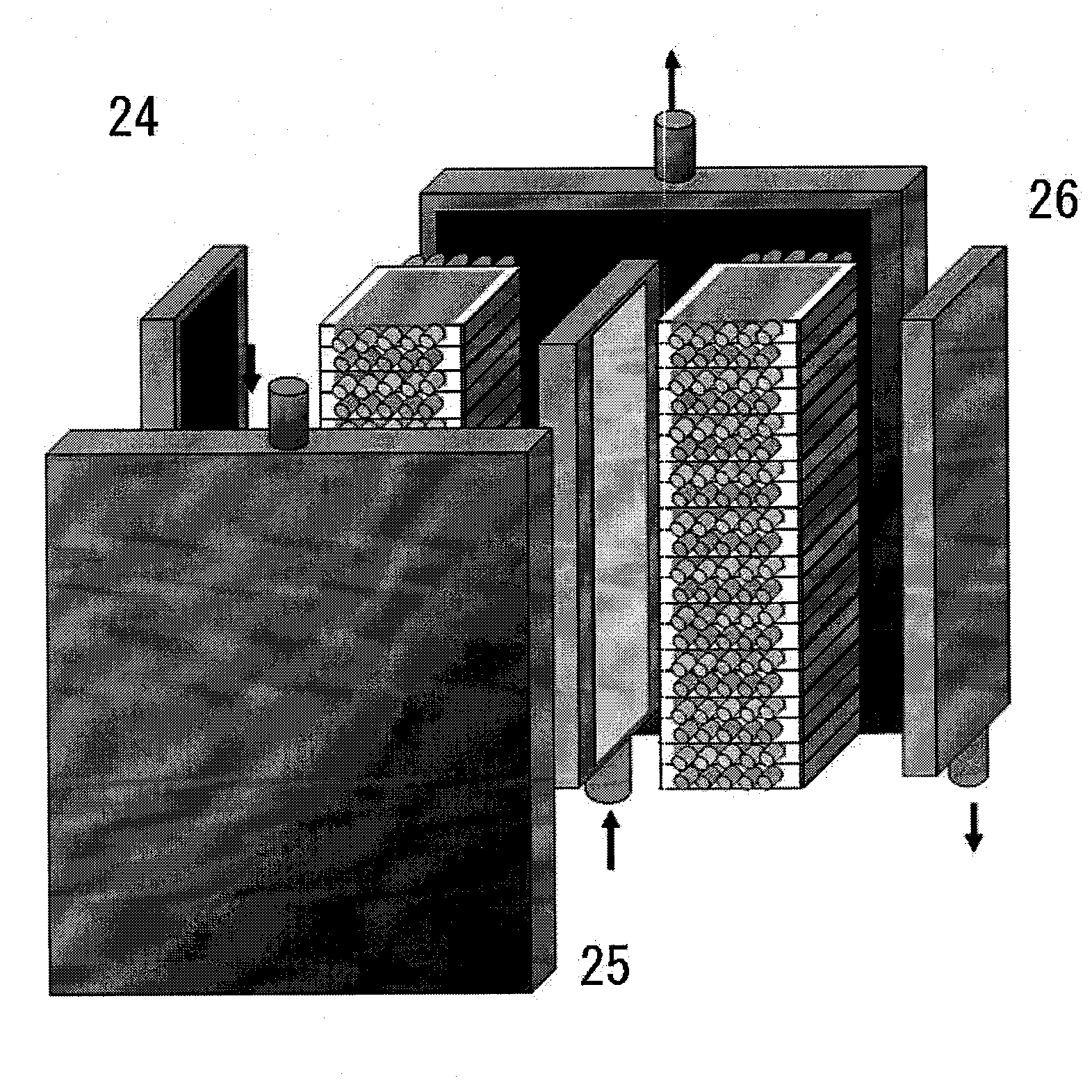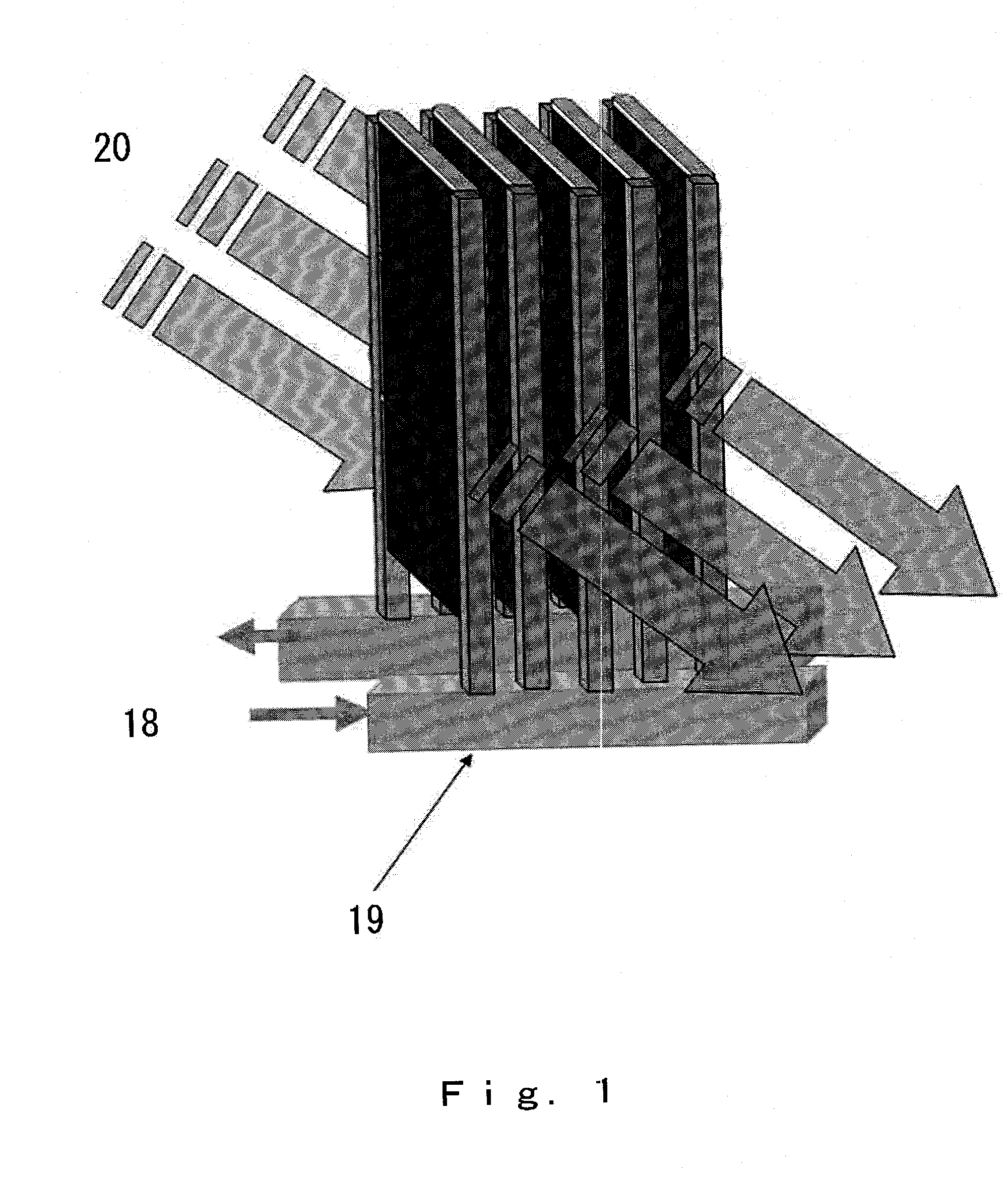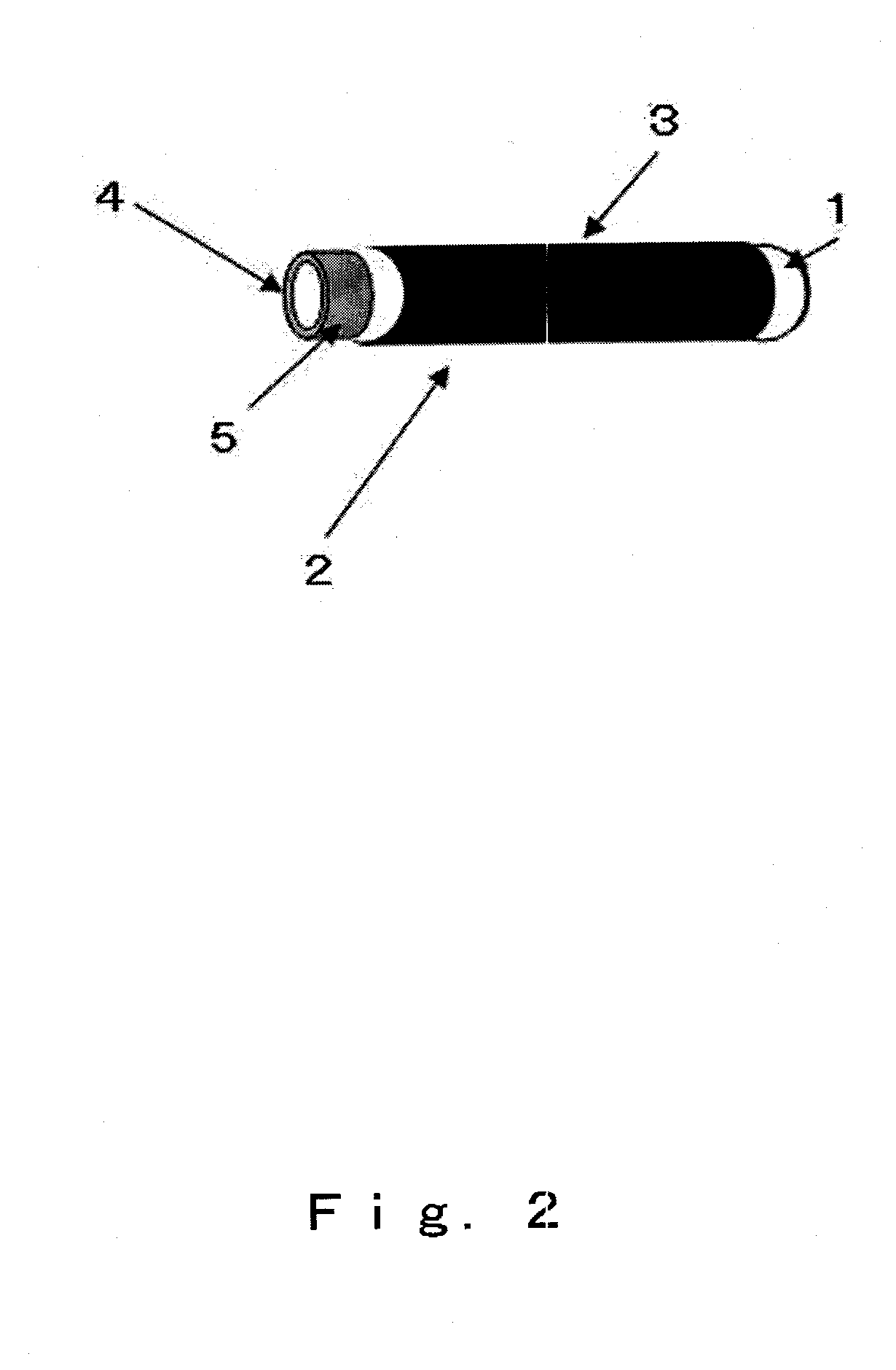Electrochemical reactor units and modules and systems composed of them
a technology of electrochemical reactors and modules, applied in the direction of fuel cell details, electrochemical generators, final product manufacture, etc., can solve the problems of cell failure, large volume change, strain in the cell,
- Summary
- Abstract
- Description
- Claims
- Application Information
AI Technical Summary
Benefits of technology
Problems solved by technology
Method used
Image
Examples
working example 1
[0108]In this working example, tube-type electrochemical reactor cells (see FIG. 7) were produced by the following procedure. First, nitrocellulose was added as a binder to a powder (made by Anan Kasei) having a composition of NiO (made by Wako) and CeO2-10 mol % Gd2O3 (GDC), this was kneaded with water and put into a clay-like consistency, after which it was extrusion molded to produce a tubular molded article. The diameter and thickness of the tube thus obtained were 1 mm and 0.2 mm, respectively.
[0109]Next, the opening at one end of the tube was sealed with vinyl acetate, after which this tube was immersed in a slurry containing a solid electrolyte with a GDC composition, thereby dip coating a layer that would form an electrolyte layer, and obtaining an electrolyte-attached tube as an anode tube. The other end of the anode tube was left exposed for 3 mm, creating an anode exposed part.
[0110]Next, this tubular molded article was dried and then fired for 2 hours at 1400° C., which ...
working example 2
[0114]The tube-type electrochemical reactor units obtained in Working Example 1 above were connected to a gas introduction pipe. The connected part was sealed with ceramic paste, and hydrogen and air were supplied as fuel gasses to the tube-type electrochemical reactor unit. FIG. 10 shows the results of a power generation performance test of the above-mentioned electrochemical reactor unit at a temperature of 400 to 490° C. It was proven that the tube-type electrochemical reactor unit of the present invention can generate a power output of at least 2.5 W / cc per unit, even at low temperatures of 500° C. or lower.
working example 3
[0115]The air pressure loss with the tube-type electrochemical reactor units obtained in Working Example 1 above was compared with that of a conventional tube-type electrochemical reactor structure produced by a conventional method (see FIG. 7). The gas permeation coefficient of the porous collector body was measured at room temperature and found to be 6.2×10−4 mL cm cm−2 sec−1 Pa−1. This value was used to find the pressure loss at 550° C. for the shape of the units of the present invention and the shape obtained by the conventional method.
[0116]FIG. 11 is a graph of the gas flow that can permeate with the electrochemical reactor unit, as a function of pressure loss. This graph shows the gas flow that can permeate at a given pressure differential, and with the units of the present invention, it was found that gas can permeate at a high flow rate even at a low pressure differential. This suggests that controlling the air flow will be easy, which tells us that temperature control will...
PUM
 Login to View More
Login to View More Abstract
Description
Claims
Application Information
 Login to View More
Login to View More - R&D
- Intellectual Property
- Life Sciences
- Materials
- Tech Scout
- Unparalleled Data Quality
- Higher Quality Content
- 60% Fewer Hallucinations
Browse by: Latest US Patents, China's latest patents, Technical Efficacy Thesaurus, Application Domain, Technology Topic, Popular Technical Reports.
© 2025 PatSnap. All rights reserved.Legal|Privacy policy|Modern Slavery Act Transparency Statement|Sitemap|About US| Contact US: help@patsnap.com



